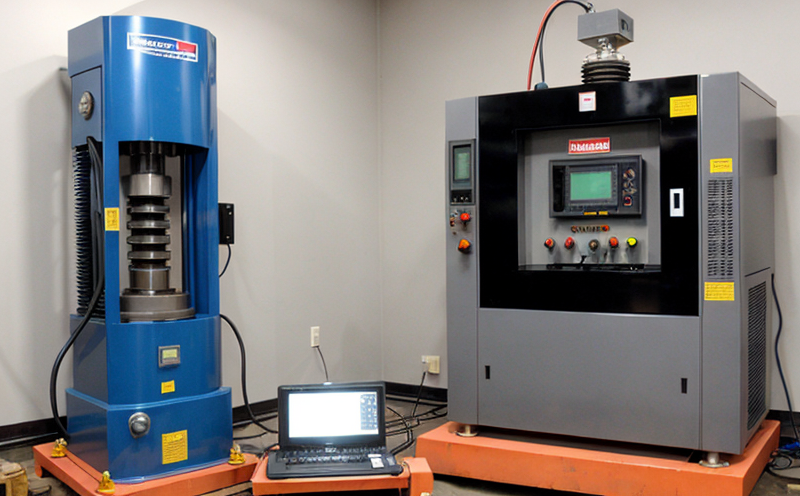ISO 10816 Mechanical Vibration Evaluation of Machines
The ISO 10816 series provides a comprehensive framework for the evaluation and assessment of mechanical vibrations in rotating machinery. This standard is widely recognized as an essential tool for ensuring the reliability, safety, and performance of machines across various industries.
ISO 10816 specifies the measurement methods, evaluation criteria, and acceptance levels for assessing machine vibration. The standard covers both stationary and portable measuring systems to ensure accurate and consistent results. It is applicable to a broad range of rotating machinery, including pumps, compressors, turbines, and motors.
The primary objective of ISO 10816 is to provide guidelines that help in preventing potential failures by identifying early signs of mechanical deterioration. By adhering to these standards, industries can reduce maintenance costs, extend equipment lifespan, and enhance overall operational efficiency.
One of the key components of this standard is the use of vibration sensors and data acquisition systems. These tools are crucial for capturing accurate vibration data during testing. The collected data is then analyzed using various techniques to determine whether the machine falls within acceptable limits.
The ISO 10816 series also includes specific standards, such as ISO 10816-3 and ISO 10816-7, which provide detailed guidance on different aspects of vibration monitoring. These standards are particularly useful for industries where precision and consistency are paramount.
Another important aspect of ISO 10816 is the concept of "bearing fault indicators." By understanding these indicators, engineers can pinpoint specific issues within a machine’s components. This early detection allows for targeted maintenance, preventing more significant problems from developing over time.
The standard also emphasizes the importance of regular calibration and validation of vibration measurement systems to ensure accurate results. Proper calibration is essential for maintaining consistent quality and reliability in the testing process.
ISO 10816 is not only applicable to new machinery but can also be used effectively on existing equipment. By implementing this standard, companies can monitor the condition of their machines over time, ensuring they remain operational and efficient throughout their lifecycle.
Scope and Methodology
The scope of ISO 10816 Mechanical Vibration Evaluation of Machines encompasses the measurement, analysis, and evaluation of vibrations in rotating machinery. This includes both stationary and portable measuring systems designed to capture precise vibration data.
- Stationary Measuring Systems: These are typically used for long-term monitoring of machines. They provide continuous data that can be analyzed over extended periods, offering insights into the machine’s condition over time.
- Portable Measuring Systems: Ideal for periodic inspections or troubleshooting specific issues, these systems offer flexibility and ease of use.
The methodology outlined in ISO 10816 involves several key steps. First, the appropriate sensors are selected based on the machine’s specifications and operational parameters. Next, the sensors are installed according to the standard's guidelines to ensure accurate data collection. Once the data is collected, it undergoes detailed analysis using various techniques.
One of the critical aspects of this process is the interpretation of the results. This involves comparing the measured vibration levels with established acceptance criteria. If the machine falls outside these limits, further investigation and corrective actions are necessary to address any potential issues.
The standard also emphasizes the importance of regular calibration and validation of the measuring systems to maintain accuracy over time. This ensures that all measurements remain consistent and reliable, providing a solid foundation for decision-making processes.
Industry Applications
The ISO 10816 series finds extensive applications across various industries where rotating machinery plays a crucial role. These include:
- Petrochemical Industry: Ensuring the safe operation of large-scale processing equipment.
- Aerospace and Defense: Maintaining the reliability and performance of critical systems in aviation and space applications.
- Manufacturing Sector: Supporting continuous production processes by monitoring machine health.
- Power Generation: Enhancing the efficiency and longevity of turbines and generators.
In each of these sectors, ISO 10816 provides a standardized approach to vibration assessment, ensuring consistency and reliability across different facilities. This standard is particularly beneficial for quality managers and compliance officers who need to ensure that all machines meet stringent performance criteria.
For R&D engineers, the detailed guidelines in ISO 10816 offer valuable insights into potential areas of improvement and optimization. By leveraging this standard, they can design more efficient and robust machinery from the outset.
The standard is also valuable for procurement teams, as it provides clear specifications that can be used to select appropriate sensors and measuring systems. This ensures that all equipment meets the necessary standards before installation.
Why Choose This Test
- Precision and Reliability: ISO 10816 provides a standardized approach to vibration assessment, ensuring consistent results across different facilities.
- Economical Maintenance Costs: By identifying early signs of mechanical deterioration, this test helps reduce the need for costly repairs and replacements.
- Extended Equipment Lifespan: Regular monitoring and maintenance recommended by ISO 10816 can significantly extend the operational life of machinery.
- Enhanced Operational Efficiency: Ensuring that machines are operating within acceptable limits helps maintain optimal performance, leading to higher productivity.
The use of ISO 10816 in mechanical vibration evaluation offers numerous benefits for industries relying on rotating machinery. It provides a robust framework for assessing machine health, which can lead to cost savings and improved operational efficiency.





